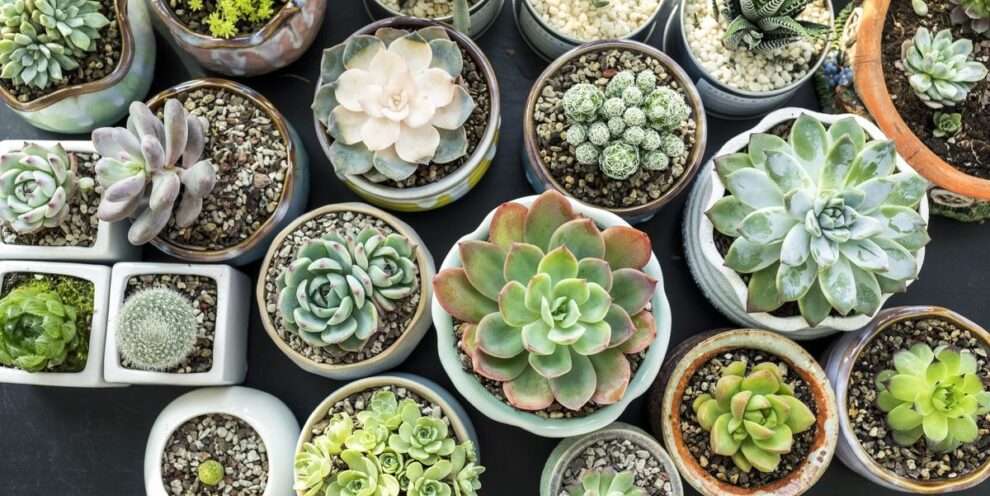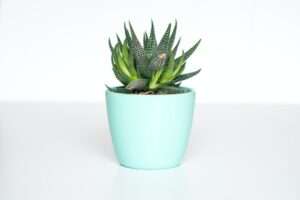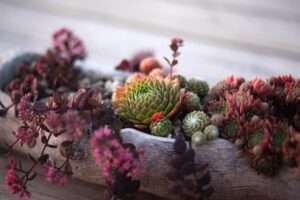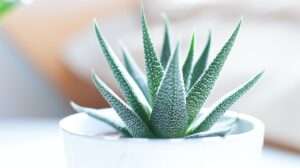A succulent garden is a collection of plants that belong to the succulent family. Succulents are known for their thick, fleshy leaves and stems that store water, allowing them to survive in arid conditions. These plants have become increasingly popular in recent years due to their unique and striking appearance, as well as their low maintenance requirements.
The history of succulent gardening can be traced back to ancient civilizations such as the Egyptians and Romans, who used these plants for medicinal purposes. In more recent times, succulents have gained popularity as houseplants and outdoor garden plants due to their ability to thrive in a variety of environments.
Benefits of Having a Succulent Garden
One of the main benefits of having a succulent garden is its low maintenance nature. Succulents are known for their ability to survive with minimal care, making them perfect for busy individuals or those with limited gardening experience. These plants require very little water and can tolerate neglect, making them an ideal choice for those who may forget to water their plants regularly.
Another benefit of succulent gardens is their drought-tolerant nature. Succulents have adapted to survive in arid environments by storing water in their leaves and stems. This means that they can withstand long periods without water, making them an excellent choice for regions with dry climates or areas prone to drought.
In addition to their practical benefits, succulent gardens are also aesthetically pleasing. These plants come in a wide variety of shapes, sizes, and colors, allowing for endless possibilities when it comes to creating visually stunning arrangements. Whether you prefer a minimalist design or a vibrant display, succulents can be arranged in various ways to suit your personal style.
Furthermore, succulents have air-purifying properties that can improve the air quality in your home or garden. Like other plants, succulents absorb carbon dioxide and release oxygen during photosynthesis. This process helps to filter out toxins and pollutants from the air, creating a healthier environment for you and your family.
Choosing the Right Location for Your Succulent Garden
When it comes to choosing the right location for your succulent garden, there are several factors to consider. First and foremost, succulents require plenty of sunlight to thrive. Most succulents prefer at least six hours of direct sunlight per day, so it’s important to choose a location that receives adequate sunlight.
In terms of soil type, succulents prefer well-draining soil that allows excess water to escape quickly. Sandy or gravelly soil is ideal for succulents, as it prevents water from pooling around the roots and causing rot. If your soil is heavy or clay-like, you can improve drainage by adding sand or gravel to the planting area.
Drainage is another crucial factor to consider when choosing a location for your succulent garden. Succulents are prone to root rot if they sit in waterlogged soil for extended periods. To prevent this, make sure that the planting area has good drainage or consider using raised beds or containers with drainage holes.
Lastly, climate considerations are important when choosing a location for your succulent garden. While succulents are known for their ability to tolerate dry conditions, they may not fare well in extreme heat or cold. It’s important to choose plants that are suitable for your climate and provide protection during extreme weather conditions.
Selecting the Right Succulent Plants for Your Garden
When selecting succulent plants for your garden, there are countless varieties to choose from. Some popular succulent varieties include Echeveria, Sedum, Aloe Vera, and Crassula. Each variety has its own unique characteristics and care requirements, so it’s important to choose plants that are well-suited to your garden’s conditions.
Matching plants to your garden’s conditions is essential for their long-term success. Consider factors such as sunlight, temperature, and humidity when selecting succulents. Some varieties prefer full sun, while others can tolerate partial shade. Similarly, some succulents are more cold-hardy than others, so it’s important to choose plants that can withstand the temperatures in your area.
Mixing and matching different succulent types can create a visually appealing garden. Consider combining plants with different colors, textures, and sizes to create a dynamic and interesting display. Grouping plants with similar care requirements together can also make maintenance easier, as you can water and fertilize them as a group.
Creating a Beautiful Succulent Garden Design
Design principles play an important role in creating a beautiful succulent garden. One key principle is to consider the overall shape and structure of the plants. Succulents come in a variety of shapes, from rosettes to trailing vines, and incorporating a mix of different shapes can add visual interest to your garden.
Using containers and raised beds is another popular design choice for succulent gardens. Containers allow for easy mobility and can be placed in various locations around your home or garden. Raised beds provide excellent drainage and can be built to suit the size and shape of your garden.
Incorporating other elements like rocks and gravel can enhance the overall aesthetic of your succulent garden. These elements can be used to create pathways, borders, or decorative features within the garden. Rocks and gravel also help with drainage and can prevent soil erosion.
Tips for Watering and Fertilizing Your Succulent Garden
Watering succulents can be tricky, as they have specific water requirements. It’s important to strike a balance between underwatering and overwatering, as both can be detrimental to the health of your plants. As a general rule, it’s better to underwater than overwater succulents.
The frequency and amount of water needed will depend on factors such as the climate, temperature, and humidity in your area. In general, succulents should be watered when the soil is completely dry. This can range from once a week to once every few weeks, depending on the conditions.
Fertilizer requirements for succulents are relatively low compared to other plants. Most succulents do not require frequent fertilization and can thrive in nutrient-poor soil. However, a balanced fertilizer can be applied sparingly during the growing season to promote healthy growth.
Avoiding common watering mistakes is crucial for the health of your succulent garden. Overwatering is one of the most common mistakes made by succulent owners. It’s important to allow the soil to dry out between waterings to prevent root rot. Additionally, it’s best to water the soil directly rather than spraying the leaves, as this can lead to fungal diseases.
Maintaining Your Succulent Garden: Pruning and Propagation
Pruning is an important maintenance task for succulent plants. Regular pruning helps to maintain the shape and size of the plants, as well as remove any dead or damaged leaves. Pruning can also encourage new growth and prevent overcrowding in the garden.
Propagation is another way to maintain and expand your succulent garden. Succulents are relatively easy to propagate through methods such as leaf cuttings and stem cuttings. This allows you to create new plants from existing ones and fill in any empty spaces in your garden.
When pruning or propagating succulents, it’s important to use clean and sharp tools to prevent the spread of diseases. It’s also important to allow cuttings to callus over before planting them, as this helps to prevent rot.
Protecting Your Succulent Garden from Pests and Diseases
While succulents are generally hardy plants, they can still be susceptible to pests and diseases. Some common pests that affect succulents include mealybugs, aphids, and scale insects. These pests can be controlled through methods such as manual removal, insecticidal soap, or neem oil.
Diseases such as root rot and fungal infections can also affect succulents. To prevent these issues, it’s important to provide proper drainage and avoid overwatering. If you notice any signs of disease, such as wilting or discoloration, it’s best to remove the affected plant to prevent the spread of the disease.
Incorporating Succulents into Your Home Decor
Succulents can also be incorporated into your home decor to add a touch of greenery and natural beauty. There are many creative ways to display your succulent garden indoors, from terrariums to hanging planters. Consider using unique containers or repurposing items such as teacups or mason jars to create a personalized display.
Matching succulents to your home’s decor style is another way to incorporate them into your interior design. For a modern and minimalist look, choose succulents with clean lines and simple shapes. If you prefer a bohemian or eclectic style, opt for succulents with trailing vines or unique textures.
Conclusion: Enjoying Your Lush and Low-Maintenance Succulent Garden
In conclusion, a succulent garden is a beautiful and low-maintenance addition to any home or garden. With their unique appearance, low water requirements, and air-purifying properties, succulents offer numerous benefits for both indoor and outdoor spaces.
By choosing the right location, selecting the appropriate plants, and incorporating design principles, you can create a stunning succulent garden that suits your personal style. With proper watering, fertilizing, pruning, and propagation techniques, you can maintain the health and beauty of your succulent garden for years to come.
So why not start your own succulent garden today? With a little bit of planning and care, you can enjoy the lush and low-maintenance beauty of succulents in your own home or garden. Whether you have a green thumb or are new to gardening, succulents are a great choice for adding natural beauty to your space. So go ahead and embrace the world of succulent gardening – you won’t be disappointed!

















Add Comment